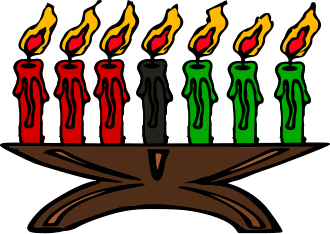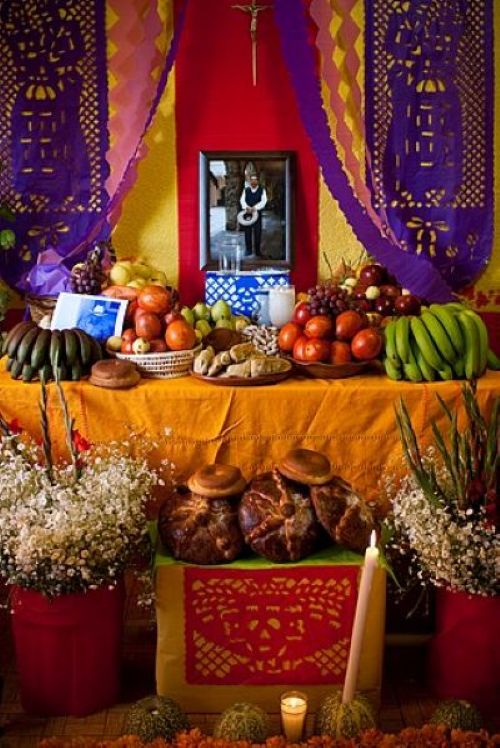Date Starting Learning: 10/13/2025
Date Completed Learning: TBD
Notes:
Date Completed Learning: TBD

Subject: Kwanzaa [Matunda ya Kwanza]
Who: Maulana Karenga
What: Umkhosi Wokweshwama - First fruits festivals exist in Southern Africa and are celebrated in December/January with the southern solstice.
When: December 26th to January 1st (Est. 1966)
Where: America (Swahili/Zulu)
Why: "Karenga said it was meant to be an alternative to Christmas. He believed Jesus was psychotic and Christianity was a "White" religion that Black people should shun. As Kwanzaa gained mainstream adherents, Karenga altered his position so practicing Christians would not be alienated, stating in the 1997 book Kwanzaa: A Celebration of Family, Community, and Culture that "Kwanzaa was not created to give people an alternative to their own religion or religious holiday." - Wikipedia
Notes:
- Nguzo Saba (The Seven Principles)
- Umoja (Unity): To strive for and to maintain unity in the family, community, nation, and race.
- Kujichagulia (Self-determination): To define and name ourselves, as well as to create and speak for ourselves.
- Ujima (Collective work and responsibility): To build and maintain our community together and make our brothers' and sisters' problems our problems and to solve them together.
- Ujamaa (Cooperative economics): To build and maintain our own stores, shops, and other businesses and to profit from them together.
- Nia (Purpose): To make our collective vocation the building and developing of our community in order to restore our people to their traditional greatness.
- Kuumba (Creativity): To do always as much as we can, in the way we can, in order to leave our community more beautiful and beneficial than we inherited it.
- Imani (Faith): To believe with all our hearts in our people, our parents, our teachers, our leaders, and the righteousness and victory of our struggle.
- a Kinara (candle holder for seven candlesticks)
- Mishumaa Saba (seven candles)
- Mazao (crops)
- Mahindi (corn), to represent the children celebrating (and corn may be part of the holiday meal).
- a Kikombe cha Umoja (unity cup) for commemorating and giving shukrani (thanks) to African Ancestors
- Zawadi (gifts).
- Nguzo Saba poster,the black, red, and green bendera (flag), and African books and artworks
- Families celebrating Kwanzaa decorate their households with objects of art, colorful African cloth such as kente, especially the wearing of kaftans by women, and fresh fruits representing African idealism. It is customary to include children in Kwanzaa ceremonies and to give respect and gratitude to ancestors. Libations are shared, generally with a common chalice (Kikombe cha Umoja) passed around to all celebrants.
- A Kwanzaa ceremony may include drumming and musical selections, libations, a reading of the "African Pledge and the Principles of Blackness," contemplation on the Pan-African colors, discussion of the African principle of the day or a chapter of African history, a candle-lighting ritual, artistic performances, and, finally, a feast of faith known as Karamu Ya Imani.The greeting for each day of Kwanzaa is Habari Gani?, which is Swahili for "How are you?"
- A Karamu Ya Imani (Feast of Faith) is a feast typically on December 31, the sixth day of the Kwanzaa period.
- Kukaribisha (Welcoming)
- Kuumba (Remembering)
- Kuchunguza Tena Na Kutoa Ahadi Tena (Reassessment and Recommitment)
- Kushangilia (Rejoicing)
- Tamshi la Tambiko (Libation Statement)
- Tamshi la Tutaonana (The Farewell Statement)
Date Starting Learning: 10/14/2025
Date Completed Learning: TBD
Date Completed Learning: TBD

Subject: Dia de Los Muertos [Day of the Dead]
Who: Mexicanos
What: Se observa ampliamente en México, donde se desarrolló en gran medida, y también se observa en otros lugares, especialmente por personas de ascendencia mexicana.
When: 31de Octubre a 6 de Noviembre (Est. circa 1940)
Where: Mexico (America/Aztec)
Why: La observancia cae durante el período cristiano de Allhallowtide. Algunos argumentan que hay influencias indígenas mexicanas o aztecas antiguas que explican la costumbre, aunque otros la ven como una expresión local de la temporada de Allhallowtide que fue traída a la región por los españoles; el Día de Muertos se ha convertido en una forma de recordar a esos antepasados de la cultura mexicana. El Día de los Muertos se considera en gran medida como una característica festiva." - Wikipedia
Notes:
Link to More Info
Date Starting Learning:TBD
Date Completed Learning: TBD
Date Completed Learning: TBD